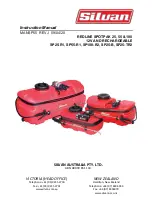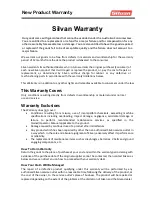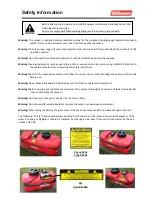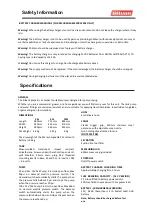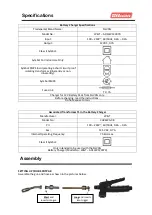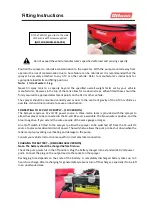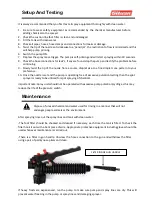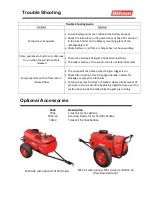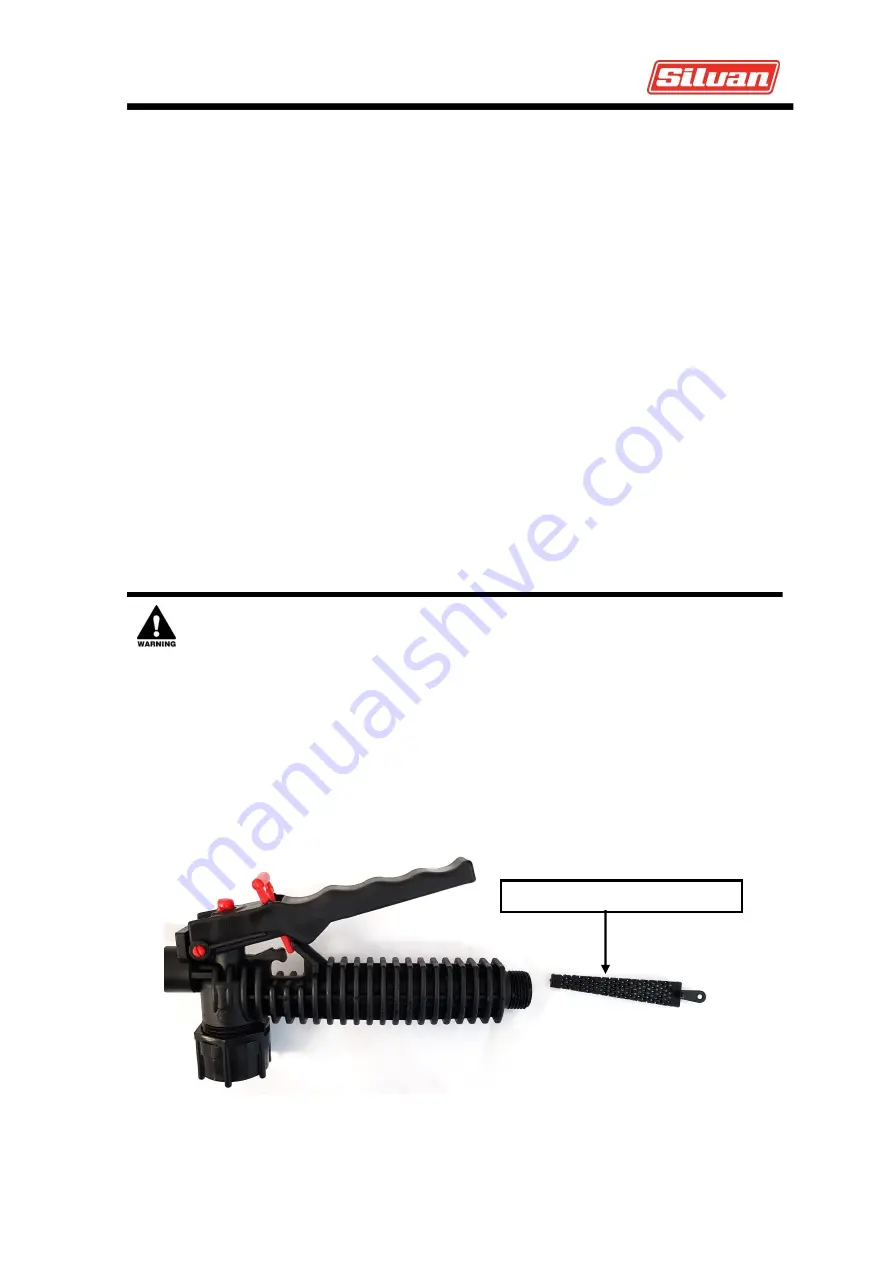
It is always recommended that you first test all spray equipment thoroughly with clean water.
1.
Be sure to wear safety equipment as recommended by the chemical manufacturer before
adding chemical to the sprayer
2.
Check the suction line foot filter is clean and undamaged.
3.
Fill the tank with clean water.
4.
Check all pipes, hoses, hose clamps and connections for leaks or damage.
5.
Twist the tip of the nozzle anti clockwise to a’ pencil jet’, the restriction to flow is minimized and this
will help pump priming.
6.
Switch the pump ON.
7.
Depress the spray lance trigger. The pump is self-priming and will start spraying within 30 seconds.
8.
Check the hose connections for leak’s, if any are found stop the pump and rectify the problem before
continuing.
9.
Slowly twist the tip of the nozzle from a course droplet size to a fine droplet cone pattern to your
preference.
10.
Once the nozzle is set and the pump is operating free of excessive pulsation/cycling then the spot
sprayer is ready to be utilized for spot spraying of chemical.
Important note: Spray units should not be operated with excessive pump pulsation/cycling as this may
reduce the life of the pressure switch.
After spraying rinse out the spray lines and tank with clean water:
-The foot filter should be checked and cleaned if necessary, each time the tank is filled. To check the
filter hook it out with a bent piece of wire. Appropriate protective equipment including gloves should be
used whenever maintenance is carried out.
-There is a filter in gun handle. Unscrew the hose connection to the gun and withdraw the filter
using a pair of pointy nose pliers and clean.
If heavy frosts are experienced, run the pump to make sure pump and spray lines are dry. This will
prevent water freezing in the pump or spray lines and damaging sprayer.
Setup And Testing
Maintenance
Dispose of unused chemical and water used for rinsing in a manner that will not
endanger people animals or the environment.
FILTER INSIDE GUN HANDLE

